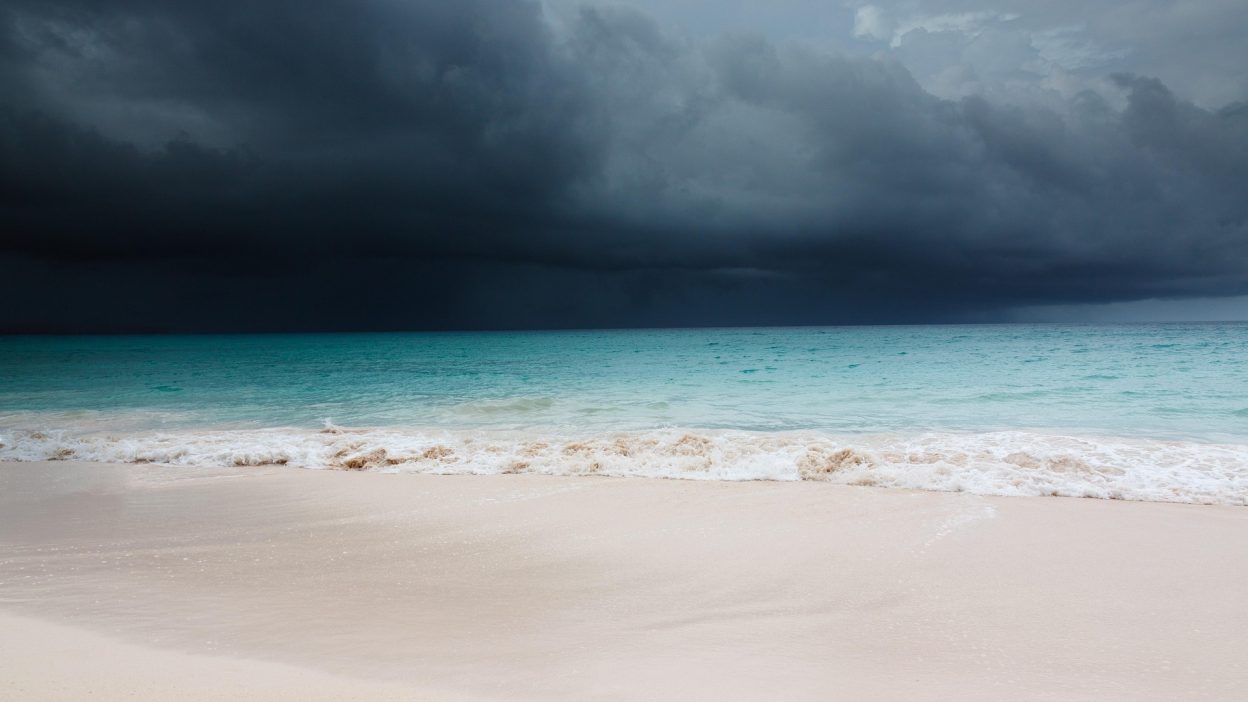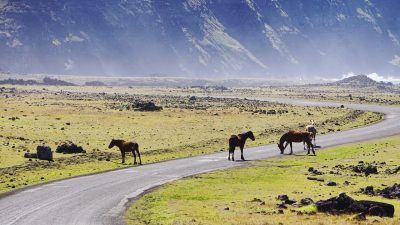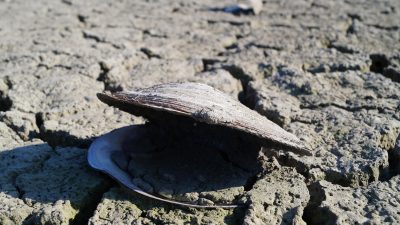Deadliest natural disaster in U.S. history
The 1900 Galveston Hurricane remains the deadliest natural disaster in U.S. history, claiming an estimated 6,000 to 12,000 lives and nearly wiping out the coastal city of Galveston, Texas. Striking on September 8, 1900, the storm made landfall as a Category 4 hurricane with winds exceeding 145 mph (233 km/h) and a storm surge of 15 feet, submerging most of the island.
At the time, Galveston was a booming port city, one of the most important in Texas, but the lack of a protective seawall and limited meteorological knowledge left it vulnerable to hurricanes. The storm destroyed over 3,600 buildings and caused an estimated $35 million in damages (equivalent to over $1 billion today), leaving thousands homeless and altering the city’s fate permanently.
Despite previous hurricanes in the region, many residents underestimated the danger. The U.S. Weather Bureau (now the National Weather Service) failed to provide sufficient warnings, and the city’s low-lying geography made it particularly susceptible to flooding. The massive loss of life and destruction not only reshaped Galveston’s future but also led to significant advancements in hurricane forecasting, emergency preparedness, and infrastructure improvements, including the construction of the Galveston Seawall.
The disaster remains a historic lesson in the power of nature and the necessity of proper disaster planning.
Formation and Meteorological Background
- Origins of the Storm in the Atlantic
The 1900 Galveston Hurricane began as a tropical disturbance off the west coast of Africa in late August 1900. Like many Atlantic hurricanes, it traveled westward across the Atlantic Ocean, following the trade winds that guide most tropical storms toward the Americas. At this stage, it was still a relatively weak system, but as it moved over the warm waters of the Atlantic, it gradually began to strengthen.
- Meteorological Conditions Leading to Intensification
As the storm entered the Caribbean Sea, it encountered ideal conditions for rapid intensification—high sea surface temperatures, abundant moisture in the atmosphere, and minimal wind shear. These factors allowed the storm to grow stronger. By the time it reached the Straits of Florida and entered the Gulf of Mexico, it had already become a well-developed hurricane.
The Gulf of Mexico, known for its warm waters that fuel hurricanes, provided the storm with the energy needed to intensify further. The lack of strong upper-level winds to disrupt its circulation helped it maintain its strength as it approached the Texas coast.
- Path of the Storm and Its Category Strength
After passing south of Florida, the hurricane took a northwestward trajectory through the Gulf, rapidly intensifying into a Category 4 storm with 145 mph winds by September 7, 1900. Meteorologists misjudged its path, expecting it to turn toward Florida or stay out to sea, but it instead headed directly for Texas. On the evening of September 8, it made landfall on Galveston Island, unleashing violent winds, torrential rain, and a 15-foot storm surge that devastated the city, making it one of the worst natural disasters in U.S. history.
Warnings and Early Signs
Meteorological Predictions in 1900
At the turn of the 20th century, weather forecasting was in its early stages, relying on surface observations, barometric pressure readings, and telegraph reports due to the lack of modern technology like satellites, radar, and computer models. The U.S. Weather Bureau (now the National Weather Service) tracked storms, but its ability to predict hurricanes’ paths and intensity was limited. Leading up to September 8, 1900, reports noted stormy weather in the Atlantic, but forecasters did not foresee it becoming a major hurricane or hitting Galveston directly. Assuming it would follow the common northeastward turn, they mistakenly believed it would spare Texas.
Lack of Advanced Forecasting Technology
In 1900, forecasters lacked modern hurricane-tracking tools like Doppler radar or satellite imagery, relying instead on barometers, wind observations, and ship reports. With no real-time view of the storm’s structure, strength, or movement, they also faced the challenge of slow and unreliable communication, as information was transmitted through telegraphs that could be disrupted by storms. A significant shortcoming was the lack of a centralized warning system, and forecasters were unaware of the critical relationship between storm surges and hurricanes, leading to the deadly 15-foot surge that devastated Galveston being poorly predicted.
Reports from Cuba and Early Misinterpretations
In 1900, forecasters lacked modern technology, relying on barometers, wind observations, and slow telegraph communication, which hindered accurate predictions. Cuban meteorologists, with more experience tracking storms in the Caribbean and Gulf, correctly identified the hurricane’s dangerous trajectory into the Gulf of Mexico, but political tensions after the Spanish-American War led the U.S. Weather Bureau to dismiss their warnings. As a result, American forecasts wrongly predicted the storm would curve toward Florida, leading to a false sense of security in Galveston. By the time the storm’s true threat was realized on September 8, it was too late, and the city was caught off guard by catastrophic winds, rain, and a deadly storm surge.
The Impact on Galveston
The 1900 Galveston Hurricane struck with devastating force, transforming a normal Saturday into one of the deadliest days in U.S. history. Powerful winds, a massive storm surge, and weak infrastructure caused thousands of deaths and forever changed the city.
Timeline of Events on September 8, 1900
On the morning of September 8, 1900, Galveston residents noticed rough seas and dropping barometric pressure but were unaware of the impending danger. By afternoon, rain intensified, winds picked up, and water levels began to rise, flooding the streets. Around 3:00 PM, hurricane-force winds started, and by 6:00 PM, the hurricane made landfall with 145 mph winds and a 15-foot storm surge that engulfed most of the city. By 9:00 PM, the city was in darkness, with homes collapsing and survivors clinging to anything they could find. The storm moved inland by midnight, leaving a devastated Galveston with thousands dead and the city in ruins.
Storm Surge and Flooding Levels
The hurricane’s 15-foot storm surge submerged all of Galveston, which was just 8.7 feet above sea level. Entire neighborhoods were washed away or destroyed, and railroad tracks and bridges were damaged, isolating the city. Thousands were swept away by the floodwaters, and with no seawalls or barriers, Galveston was fully exposed to the storm’s devastating force.
Wind Speeds and Structural Damage
The hurricane made landfall as a Category 4 storm with 145 mph winds, causing widespread devastation. Over 3,600 buildings, including homes, churches, and businesses, were destroyed, and 90% of Galveston’s structures were damaged or leveled. The St. Mary’s Cathedral Basilica suffered severe damage, and railroad systems were uprooted, hindering relief efforts. The storm surge further worsened destruction, loosening foundations and causing buildings to collapse or float away, while debris became deadly projectiles, hitting other structures and people.
.
Human Toll and Casualties
The 1900 Galveston Hurricane is the deadliest natural disaster in U.S. history, with an estimated 6,000 to 12,000 deaths. The official toll is around 8,000, but some believe the true number may be higher due to missing and unrecorded victims, as entire families and neighborhoods were wiped out.
Estimated Death Toll (6,000 – 12,000 People)
The hurricane struck with little warning, leaving thousands with no time to evacuate. Most deaths were from drowning or collapsing buildings due to the 15-foot storm surge and 145 mph winds. Thousands of bodies were swept away, and many others were buried in mass graves to prevent disease. The overwhelming casualties strained the city’s hospitals and relief efforts, marking one of the worst humanitarian crises in U.S. history.
Stories of Survival and Tragedy
The hurricane left behind countless tragic stories. Isaac Cline, Galveston’s chief meteorologist, lost his pregnant wife when their house was destroyed, and he and his children barely survived by clinging to debris. At the Sisters of Charity Orphanage, 93 children and 10 nuns tried to stay together by tying themselves with rope, but only three children survived. Survivor Louise Hopkins recalled helplessly watching loved ones swept away by the rising waters. Many who sought refuge in churches and hotels perished when these structures collapsed, while others survived on rooftops or debris, but many were trapped and drowned.
The Effect on Different Demographics (Women, Children, Minorities)
The hurricane disproportionately affected certain groups in Galveston. Women and children were especially vulnerable, unable to escape the rising waters or strong currents. Poor and working-class residents, living in weaker wooden homes, faced the greatest destruction. Black and immigrant communities, a significant part of the workforce, were often excluded from official casualty counts, likely underreporting their losses. The storm left thousands of orphans, and relief agencies struggled to care for them. In the aftermath, racial and economic disparities influenced recovery efforts, with wealthier families receiving better aid, while poorer communities were left to fend for themselves. Despite this, Galveston’s residents showed incredible resilience, coming together to rebuild.
Physical and Economic Devastation
The 1900 Galveston Hurricane not only took thousands of lives but also left the city in complete ruin. The storm’s combination of violent winds, catastrophic storm surge, and widespread flooding destroyed nearly everything in its path, leading to one of the worst economic and infrastructural disasters in U.S. history.
Destruction of Buildings, Roads, and Infrastructure
The hurricane leveled Galveston, destroying around 3,600 buildings and severely damaging 90% of structures. Entire neighborhoods were wiped out by wind and storm surge, and the city’s roads were buried under sand and debris, hindering recovery efforts. Railroads and bridges were destroyed, cutting off access to supplies and aid, while the telegraph system was wiped out, isolating the city for days. The water and sewage systems were damaged, raising fears of disease outbreaks, and iconic buildings, including St. Mary’s Cathedral Basilica, suffered extensive damage, though it survived.
Impact on Businesses and Livelihoods
Before the hurricane, Galveston was a thriving port and financial hub, but the storm devastated its economy. Hundreds of businesses were destroyed, leaving thousands unemployed, and the Port of Galveston was severely damaged, causing many shipping companies to move to Houston. Fishing and agriculture were hit hard, with boats, livestock, and crops destroyed. Wealthy investors left rather than rebuild, worsening the city’s economic prospects. The storm caused an estimated $35 million in damages (over $1 billion today), and without modern disaster relief, Galveston relied on private donations and local efforts for recovery.
Government and Community Response
Immediate Rescue and Relief Efforts:
After the storm, Galveston’s local government and emergency services quickly mobilized limited resources for rescue and recovery. Volunteers from nearby towns and across Texas set up shelters and provided food, water, and medical aid to survivors.
Role of the U.S. Government and Local Authorities:
With no federal disaster relief system in place, local authorities led recovery efforts, while the U.S. Army helped with search and rescue and delivered supplies. Despite their tireless work, Galveston officials struggled due to limited resources and infrastructure.
Mass Burial and Recovery Operations:
The hurricane’s death toll was staggering, and mass burial operations were necessary, with victims buried in mass graves. Recovery efforts focused on clearing debris, rebuilding infrastructure, and addressing a public health crisis caused by contaminated water and the spread of disease.
Engineering and Reconstruction Efforts
The Building of the Galveston Seawall:
The Galveston Seawall, completed in 1904, was a key engineering project built to protect the city from future storm surges. Stretching over 10 miles, it was designed to prevent flooding and stands as a symbol of the city’s resilience. Originally made of granite and stone, the seawall has been reinforced over time and has helped protect Galveston from many hurricanes, including the 1915 storm.
Raising the City’s Elevation to Prevent Future Disasters:
In addition to the seawall, Galveston raised its elevation between 1902 and 1911 to protect against future flooding. Large sections of the city were raised up to 17 feet by jacking up buildings and pumping sand, dirt, and gravel beneath them. This labor-intensive project was a major engineering feat and helped reduce the impact of future storms on the city’s infrastructure and residents.
Changes in Urban Planning and Disaster Preparedness:
The hurricane prompted a shift in urban planning and disaster preparedness in Galveston. New building codes required stronger materials like reinforced steel and brick, and the city developed better disaster preparedness systems, including early warning systems, improved communication, and evacuation plans, laying the groundwork for future hurricane protection.
Lessons Learned and Impact on Modern Meteorology
How the Hurricane Changed Weather Forecasting:
The 1900 Galveston Hurricane highlighted the limitations of meteorological science, as there was no national system for monitoring hurricanes and forecasting technology was rudimentary. The disaster led to calls for improved forecasting techniques, the establishment of a formal weather service, and better real-time storm tracking. It marked a turning point in meteorology, shifting focus to tropical cyclones and emphasizing the need to better understand and predict their deadly potential.
Improvements in Hurricane Tracking and Warning Systems:
After the 1900 hurricane, significant advancements were made in hurricane tracking. The U.S. Weather Bureau (later the National Weather Service) was established as a federal agency, and telegraphs and radios were used for faster communication of weather data. New instruments like barometers and anemometers improved measurements of pressure and wind speeds. By the 1920s, hurricane warning systems had become more reliable, and in the 1930s, the Weather Bureau began issuing official warnings to coastal communities.
The Role of the National Weather Service in Future Storms:
The 1900 Galveston Hurricane was a turning point for the National Weather Service (NWS), highlighting the need for improved forecasting and communication systems. Over time, the NWS integrated satellite imagery, radar, and computer models, enhancing storm tracking accuracy. Advances like hurricane hunter aircraft and Doppler radar further improved predictions, allowing for more timely warnings. The NWS, alongside NOAA, also refined public outreach through social media and automated alerts. The lessons from the hurricane shaped modern disaster response systems, ensuring better preparedness for hurricanes and other natural disasters.
The Legacy of the 1900 Galveston Hurricane
How the Disaster Shaped Galveston’s Future:
The devastation of the 1900 hurricane transformed Galveston, prompting a major rethinking of how to protect the city from future disasters. Efforts like the construction of the seawall and elevating the city helped it recover, though it never fully regained its pre-hurricane population and economy. Galveston shifted its focus to tourism, leveraging its new infrastructure and safety measures to become a popular coastal destination. The hurricane also led to changes in local governance and urban planning, influencing national approaches to disaster resilience in coastal cities.
Comparison to Other Major Hurricanes in U.S. History:
The 1900 Galveston Hurricane remains the deadliest in U.S. history, with an estimated death toll between 6,000 and 12,000. Unlike other major storms like Hurricane Katrina, which had broader regional impacts, Galveston’s devastation was concentrated on one city. While later storms such as Hurricanes Andrew and Irma led to changes in local policies, the Galveston Hurricane was a pivotal moment in shaping disaster management. Advances in technology and urban planning have since reduced the likelihood of such a catastrophe, but the 1900 storm remains a key reference point for understanding hurricane risks.
Conclusion
Why the Galveston Hurricane Remains Relevant Today:
The 1900 Galveston Hurricane remains a pivotal event in U.S. history, shaping modern disaster management with its lessons on preparedness, engineering, and forecasting. Its impact highlighted the vulnerability of coastal cities and the need for resilient infrastructure, early warning systems, and community response. Galveston’s reconstruction, including the seawall and raising the city’s elevation, transformed it into a model of resilience for other coastal cities facing similar risks.
Key Takeaways for Disaster Preparedness:
The 1900 Galveston Hurricane highlights key lessons for modern disaster management: the importance of preparedness with early warning systems and evacuation plans, building resilient infrastructure like seawalls, and coordinating disaster response through collaboration among government, non-profits, and the private sector. It also emphasizes the need to adapt to evolving threats like climate change and rising sea levels. Finally, ongoing community education and awareness are vital to ensuring people know how to protect themselves in future disasters.
Frequently Asked Questions (FAQ)
Q: How strong was the Galveston Hurricane of 1900?
A: It was a Category 4 hurricane with winds reaching 145 mph (233 km/h).
Q: How many people died in the Galveston Hurricane?
A: The estimated death toll ranges from 6,000 to 12,000, making it the deadliest natural disaster in U.S. history.
Q: What was the height of the storm surge?
A: The storm surge reached 15 feet, submerging most of Galveston.
Q: What measures were taken to prevent future disasters?
A: The Galveston Seawall was built, and the city’s elevation was raised to help protect against future hurricanes.
References & Sources:
- Wikipedia – The Galveston Hurricane of 1900
https://en.wikipedia.org/wiki/1900_Galveston_hurricane - The 1900 Storm: Galveston, Texas (The Handbook of Texas Online – Texas State Historical Association)
https://www.tshaonline.org/handbook/entries/galveston-hurricane-of-1900 - Smithsonian Magazine – The Great Galveston Storm of 1900
https://www.smithsonianmag.com/smart-news/more-century-later-texas-hurricane-remains-americas-deadliest-natural-disaster-180964733/ - The Library of Congress – Historic Newspaper Coverage on the 1900 Galveston Hurricane
https://www.loc.gov/item/2014699678/ - History Channel – The 1900 Galveston Hurricane
https://www.history.com/news/how-the-galveston-hurricane-of-1900-became-the-deadliest-u-s-natural-disaster - PBS American Experience – The 1900 Storm
https://www.pbs.org/wgbh/americanexperience/films/1900/
YT Link
A look back at the devastating 1900 Galveston hurricane
The 1900 “Great Storm” and Raising Galveston




